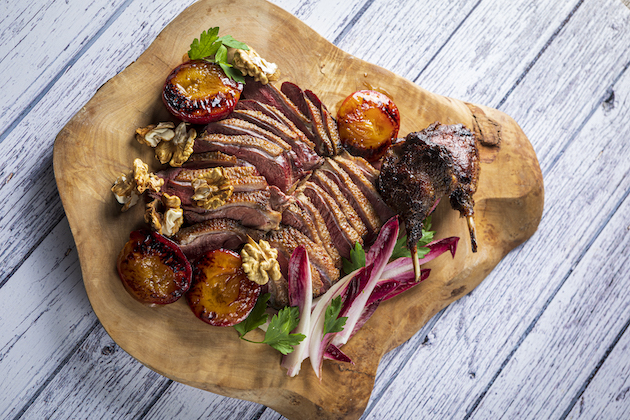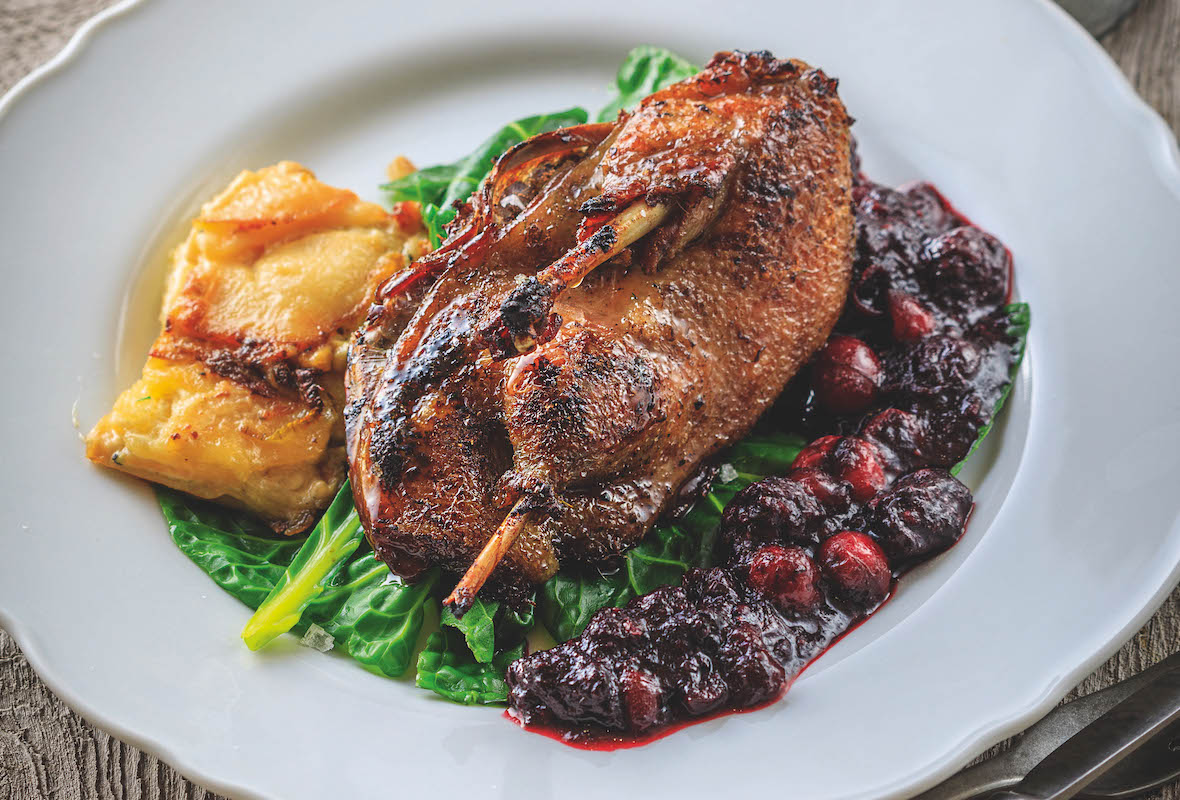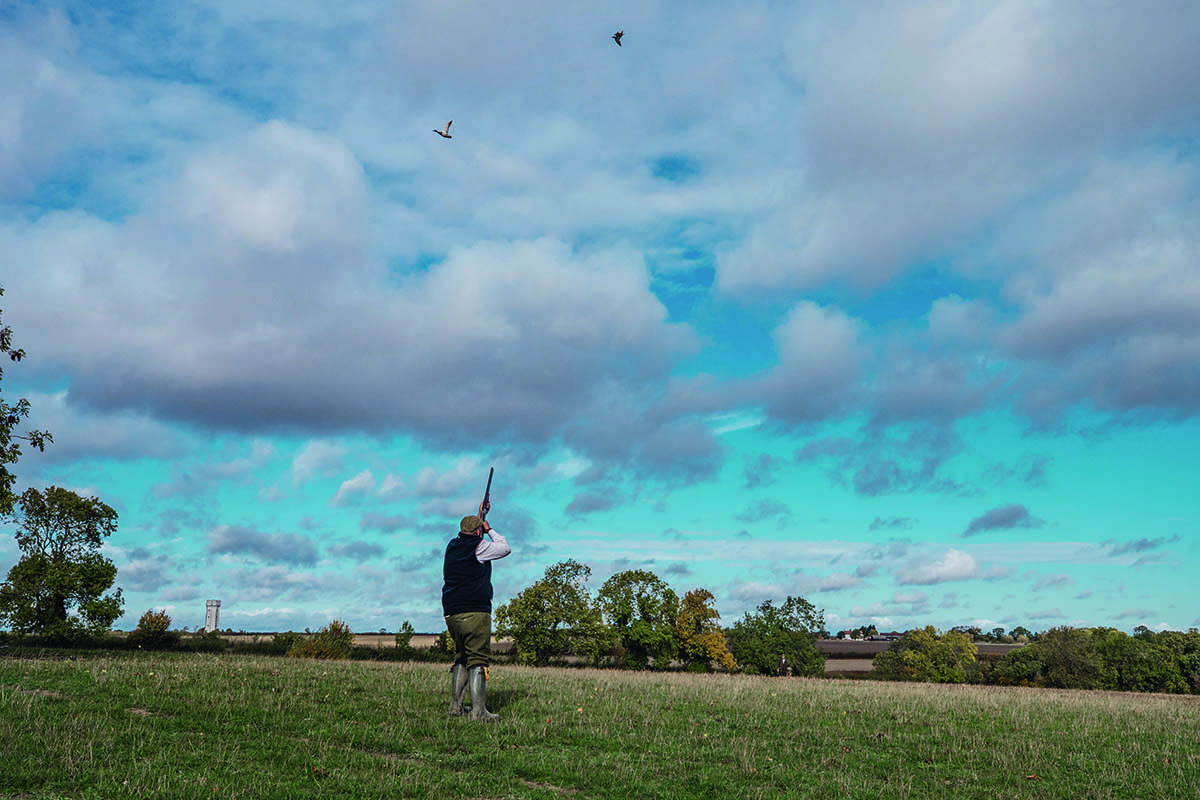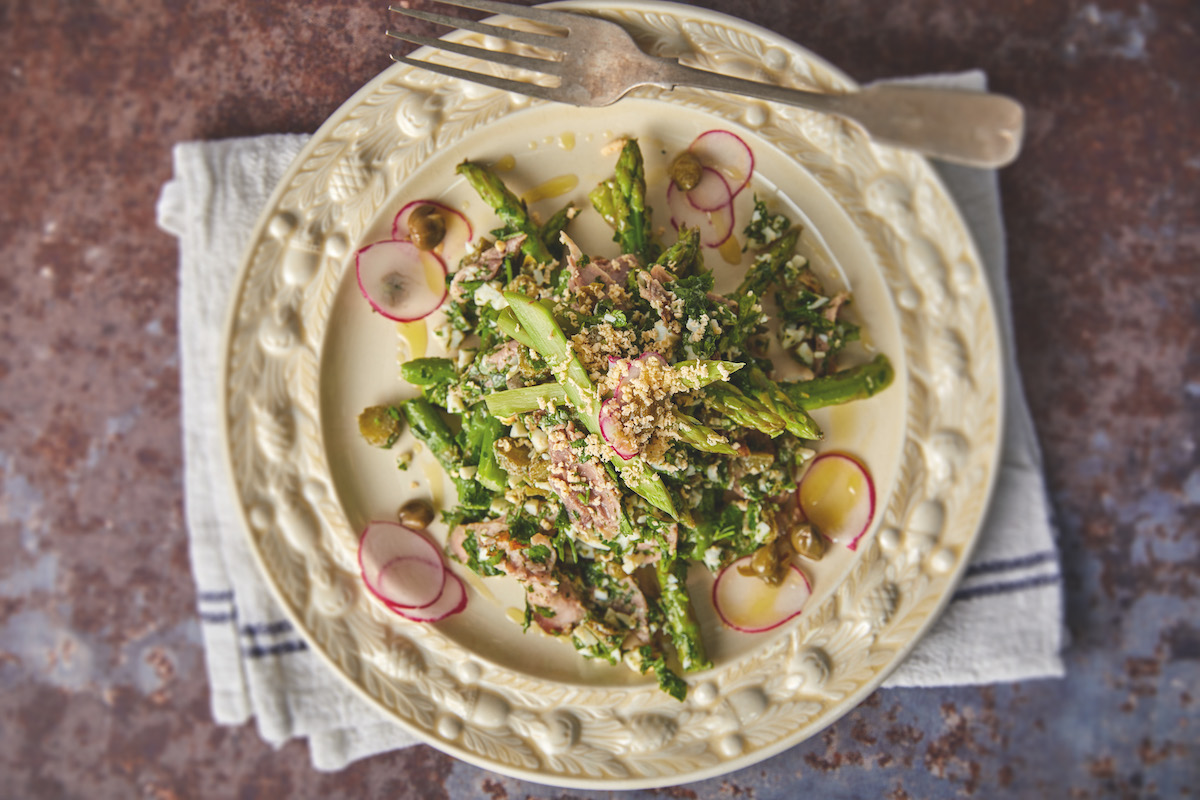How to cook meltingly delicious duck
Two-phase duck cooking is the route to perfectly prepared mallard, as Rose Prince shows with a dish that is equally delicious hot or cold. Serves two.

Wild Duck with roasted plums, wet walnuts and endives -a warm salad.
It would be ridiculous to inform anyone above nursery school age of the difference between a chicken and a duck. Yet behind their marked appearances lies a cooking problem. Roast a chicken for the correct amount of time and the legs will be as tender as the breast meat. Not so with a duck, whether it is domestic or wild. I gave up struggling to pick tightly clinging duck leg meat from its bones a long time ago. Sure, you can use your teeth, medieval table manners-style, but in truth it is better when melting away from the bones.
Hence the invention of two-phase duck cooking. Neatly severed away from the carcass, the legs have a head start in the cooking process of 35 minutes in a low oven. The breasts only need about 15 minutes, once they are ready. I do this with partridges, too, though they may need even longer than mallard — about 45 minutes.
Wild duck with roast plums, red chicory, walnuts and honey mustard
Ingredients
- 1 mallard
- 2 tbsp duck fat or butter
- 1 tbsp butter
- 4 red plums, halved and stoned
- leaves from one red chicory
- 8 walnuts, shelled
- 1 tbsp flat parsley leaves
- 3 tSp Dijon mustard
- 2 tsp honey
- 3 tsp apple cider vinegar
- 1 tsp white miso paste
- 1 tbsp cold-pressed rapeseed oil
- freshly ground black pepper
- pinch of salt
Method
- Preheat the oven to 150°C.
- Clean the outside of the bird with damp kitchen paper, then pull out any feathers that are still attached to the legs and breast.
- Separate the legs from the duck. To do this neatly, pull the leg away from the breast of the bird then, with a filleting knife, cut the skin that joins the two parts. Slice down deep between the thigh and the lower part of the breast meat, cutting around the whole leg, under the bird near the backbone. The aim of this is to remove as much of the meat surrounding the leg, as that will make for a neater appearance later.
- Once the flesh around the leg has been cut, twiddle the leg to find the joint connecting it to the main carcass and snip with scissors. Repeat with the other leg.
- Next, neatly remove the breast meat. Cut along the breastbone on one side, holding the knife very close to the bone so that as much of the meat as possible can be removed. Cut down and around the wing joint, then snip with scissors to sever the joint from the duck. Ideally, the breast meat should have little shot in it but if there is obviously bruised meat, cut it out from the underside —not the skin side.
- Melt the duck fat or butter in a sauté pan. When it foams, add the legs, skin side down. Brown them on both sides, then transfer them to a roasting pan and place in the oven for 35 minutes. They will slow-roast, with the meat becoming tender.
- Now, cook the two breast fillets. Brown them on both sides then add them to the roasting tin. They will need approximately 10 to 15 minutes, depending on how rare you like your mallard to be cooked. Remove the legs and breasts from the oven and allow them to rest in a warm place.
- Meanwhile, clean the sauté pan and add the butter. Place the plums in the pan, cut side down, and cook until they are nicely burnished. Then turn them and cook them on the other side for one minute. Turn off the heat and set them to one side while you make the dressing. Put all the dressing ingredients into a bowl and whisk to an emulsion.
- To serve, slice the breast meat across the grain — half a centimetre thickness is perfect. Then either divide the meat between two plates or heap it on to a serving board. Add the legs, ready for them to be picked up and chewed. Place the plums around them, with the chicory, walnuts and parsley leaves. Pour over the dressing and serve. This meal can be lovely if the duck and plums are still warm, but it also makes a delicious cold salad.








